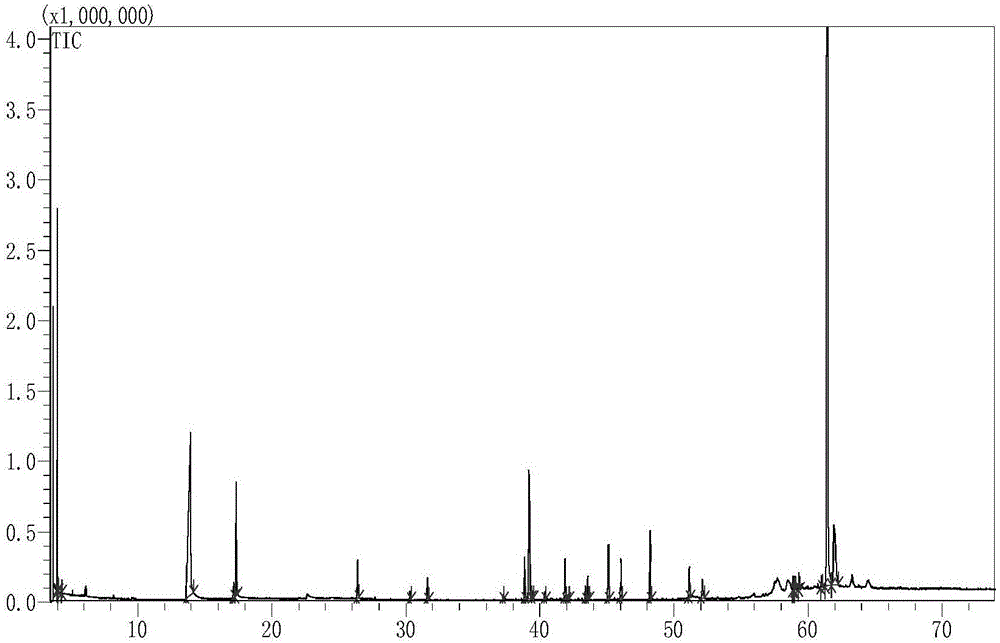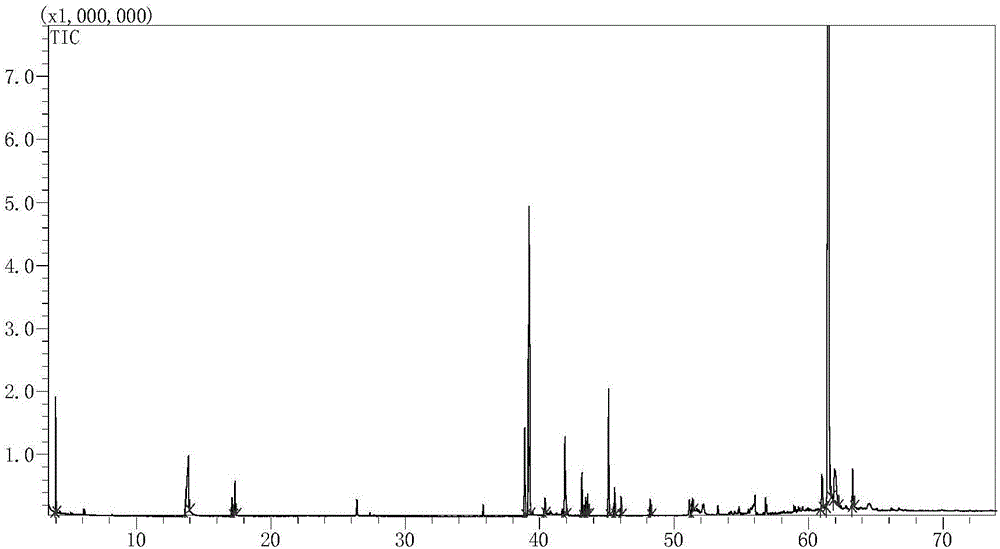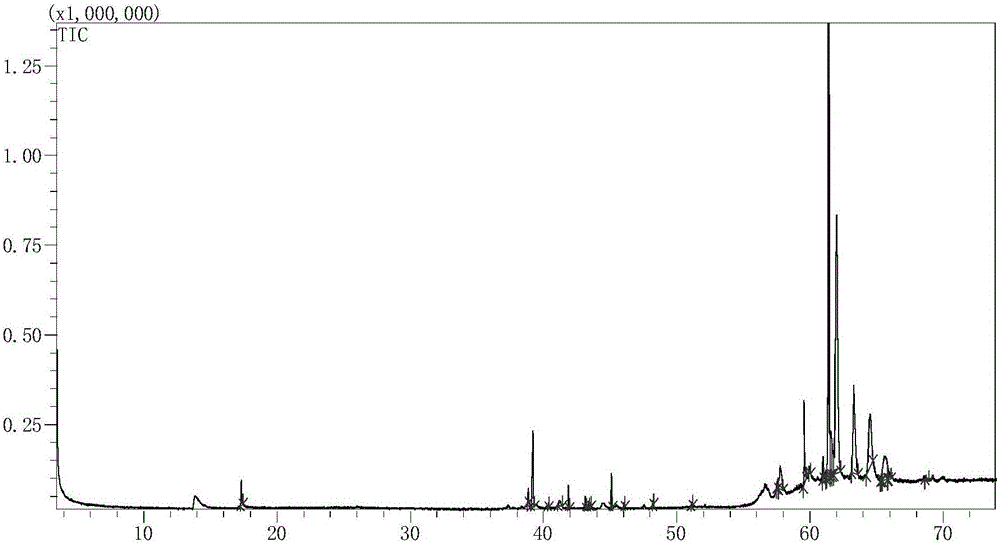Method for measuring saccharide content in fragrant solomonseal rhizome by adopting GC-MS method
A GC-MS, Polygonatum japonica technology, applied in measurement devices, instruments, scientific instruments, etc., can solve the problems of poor reproducibility, difficult control, single quality control indicators, etc., and achieve strong controllability and measurement accuracy. High precision and clear measurement indicators
- Summary
- Abstract
- Description
- Claims
- Application Information
AI Technical Summary
Problems solved by technology
Method used
Image
Examples
Embodiment 1
[0031] Embodiment 1 adopts GC-MS method to analyze carbohydrate TMS derivative in Polygonatum Polygonatum
[0032] 1. Sample processing: Polygonatum odoratum Xiang, Jiangbei Polygonatum, and Guan Yuzhu were used as test objects, and Polygonatum odoratum powder was prepared respectively. Precisely weigh 0.05g Polygonatum odoratum powder, add 1ml DMF and 0.ml silanization reagent to a 2ml chromatographic sample bottle, cover the bottle tightly and shake well, put it in an oven at about 70°C for about 20-30min, then cool to room temperature , using GC-MS method for injection analysis.
[0033] 2. GC-MS detection: Gas chromatography conditions are: chromatographic column: capillary column Rtx-5ms with specifications of 30m×0.25mm×0.25μm; carrier gas: He; flow rate: 1.0mL / min; inlet temperature: 250 ℃; temperature program: initial temperature 60 ℃, keep 1min, raise temperature to 100℃ at 5℃ / min, keep 2min, then raise temperature to 220℃ at 3℃ / min, keep 5min, then raise temperature...
Embodiment 2
[0039] The optimization of the extraction method of sucrose and glucose TMS derivatives in Polygonatum Polygonatum in embodiment 2
[0040] The contents of sucrose and glucose measured by internal standard method were used as indexes for the evaluation and selection of each level and factor, and the orthogonal experiment design is shown in Table 2.
[0041] Table 2 Orthogonal design table for the extraction method of Polygonatum odoratum TMS derivatives
[0042]
[0043] Accurately weigh about 0.05 g of Polygonatum odoratum powder, carry out the experiment according to Table 3, pass through a 0.45 μm microporous membrane, set the volume to 2 ml, shake well, and carry out sample detection according to the method in Example 2. Orthogonal experiment results are shown in Table 3.
[0044] Form 3L 9 (3 4 ) Orthogonal experimental results
[0045]
[0046] According to the analysis of variance of the orthogonal experiment, the optimal extraction parameter is selected as A 2...
Embodiment 3
[0047] Embodiment 3 Polygonatum odoratum dry powder and the screening of conditions
[0048] 1. Dry powder of Polygonatum odoratum (coarse powder, coarse powder, medium powder, fine powder, finest powder and very fine powder) and drying conditions (shade drying method, vacuum drying method, drying method and traditional sugar kneading method) according to The best extraction parameters and control indicators provided in Example 3 were tested, and a one-way analysis of variance was carried out. The results are shown in Table 4 (P<0.005), indicating that there are differences among various powders.
[0049] Table 4 Results of variance analysis of Polygonatum odoratum dry powder with different fineness
[0050]
[0051] 2. Using LSD method and Dunnett method for multiple comparisons, coarse powder, medium powder, fine powder, the finest powder and very fine powder are compared with the coarsest powder respectively, and Polygonatum fine powder has a higher total content than ot...
PUM
 Login to View More
Login to View More Abstract
Description
Claims
Application Information
 Login to View More
Login to View More - R&D
- Intellectual Property
- Life Sciences
- Materials
- Tech Scout
- Unparalleled Data Quality
- Higher Quality Content
- 60% Fewer Hallucinations
Browse by: Latest US Patents, China's latest patents, Technical Efficacy Thesaurus, Application Domain, Technology Topic, Popular Technical Reports.
© 2025 PatSnap. All rights reserved.Legal|Privacy policy|Modern Slavery Act Transparency Statement|Sitemap|About US| Contact US: help@patsnap.com



